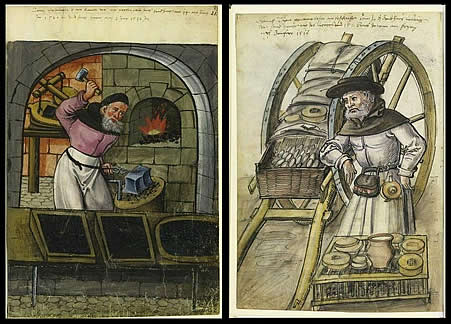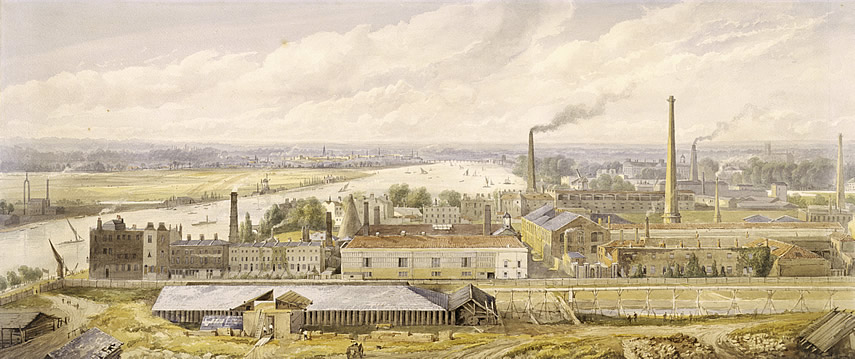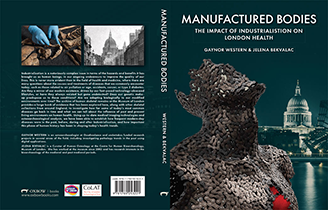Occupational hazards and sporting catastrophes
Accidents in the workplace are one of the first things that you might think of when imagining the crowded, cramped and busy environments that people were working in during the Industrial period.
In actual fact, there were many aspects of living and working in rural environments before industrialisation that proved to be just as hazardous as living in the manufactured urban environment of industrial London.
This is because a large proportion of jobs both before and during industrialisation were manual, irrespective of where you lived. Rural life involved a lot of manual labour, precarious terrain, rustic equipment and exposure to the elements. Additionally, as human beings, we are quite creative when it comes to getting involved in accidents! It's not just types of occupations and working environments we have to consider but other activities too such as warfare, sport, interpersonal violence and traffic.
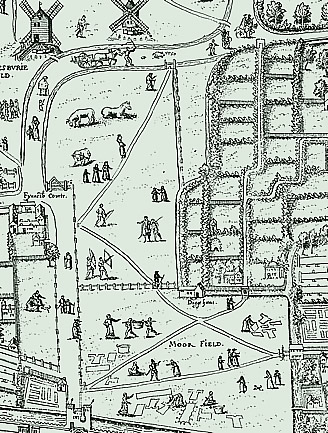
Copperplate map 1559 Frans Franken, section showing Moorfields and The Spital (© Museum of London)
Occupations
Prior to industrialisation, London functioned as a trading port and as a Royal administrative centre based at Westminster. Outside the Square Mile, the City was surrounded by green fields, pastures and marshes where villages and hamlets like Bethnal Green, Bow, Chelsea and Spitalfields were located. Some functioned as hunting lodges and retreats for the well-to-do, some as religious houses and grounds, while others were settlements relying on agriculture, market gardening and horticulture.
During the pre-industrial period, most people living around the city would have been involved in the same occupations as those living in the rest of the country. This would have included some more specialist manufacturing trades such as including carpentry, candle making, milling, brick and tile production, quarrying, mining, cloth making, smelting and blacksmithing. However, in the City itself, many roles were clerical, though day-to-day manual jobs would have been undertaken and increasingly construction, with the creation of large stone buildings such as Westminster Abbey, completed in AD1066 and Westminster Hall, started in AD1097.
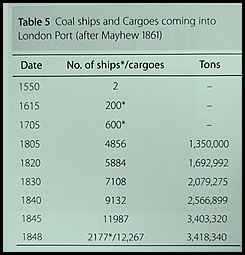
Table detailing coal ships and cargoes coming into London Port (after Mayhew 1861)
As market towns expanded and the demand for goods rose, construction of houses and working premises increased, supporting larger populations and the transport of more goods and materials. In London, this also included goods from overseas and during the Industrial period, it became the largest port globally.
As well as an increase in skilled crafts within the city, such as furniture making and cloth manufacture, the ever-expanding docks provided a significant amount of labour-intensive employment, particularly involving the import of coal, wood and ballast. Potteries, lime kilns, tanneries and blacking factories also sprang up along the South Bank and in the East End.
Next: Warfare








